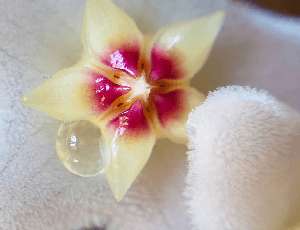Everybody has to start someplace.
That’s what I told my wife, Mary, when she decided to get involved with photography again after being away from it for almost twelve years. A lot has changed. She was shooting with manual-focus film cameras. Now she’s facing the same learning curve as anyone who’s worked with film for a long time.
This photograph of a Monterey Cyprus at Point Lobos State Reserve in Carmel-by-the-Sea, California, was made with a Canon EOS 20D with a Canon 75-300mm f/4-5.6 EF IS zoom lens set at 300mm. Exposure was determined in Program mode to be 1/400 sec at f/6.3.
© 2004 Joe Farace All rights reserved.
Let’s begin with the sage advice Kevin Elliott gives his clients: “You didn’t learn everything you know about conventional photography over night, so you’re not going to learn everything about digital imaging in a few days—no matter how experienced you think you are.” Those last eight words are mine; Kevin is too polite to say that.
Who am I talking to in this lesson? You, if you fit the following profile: You’re an experienced 35mm photographer with maybe some, but not a lot, of darkroom experience. You own a computer that you use at work or at home to surf the ‘Net, buy stuff, or send e-mail to Aunt Kate. (If you don’t have a computer that’s powerful enough for digital imaging, that’s a whole ‘nother column, but if you’re interested in a lesson on that subject, just let me know.) Here is a step-by-step description of how to get started in digital imaging without losing your mind, or going broke in the process. You probably already learned how to do this perfectly well when you were just shooting film, but here’s the digital version.
Step 1: Buy a scanner so you can begin to convert all of your best film images to digital. There are lots of scanners available but for me the best deal is the Epson Perfection 4870 PHOTO. It ain’t a cheap $99 scanner, but unlike other items I’ll suggest acquiring later on, you can use this one for a long time, at least in Internet years. (They’re like dog years, in case you didn’t already know.)
The Epson Perfection 4870 PHOTO will digitize film from 35mm negatives and slides and film up to 4×5 sheets. Since you don’t need a lot of techno speak at this point, let’s just say that it will do a good job on your film, and give you the ability to scan prints too. Oh yeah, while the process is surprisingly simple, be sure read the manual. That especially goes for the men reading this. Now that didn’t hurt, did it?
Step 2: Get Adobe Photoshop Elements 3.0. Yeah, I know there are lots of inexpensive image editing programs available for Mac OS or Windows computers, but if you’re truly serious about digital photography you’ll ultimately want to use Adobe Photoshop CS so you might as well get started now. Besides, Elements 3.0 only costs $99. Please spare me the e-mail about why XYZ Photo software is just as good (maybe better) and only costs forty-seven cents. This is the same advice I would give you if you asked me face to face.
UPDATE: Adobe recently released Photoshop Elements 4.0, so if you haven’t bought version 3, spend a few dollars more and get 4!
Step 3: The best way to learn how to make digital images is to shoot some. Purchase a moderately priced point-and shoot camera. I like Canon’s SD-20. The SD20 is small, insanely easy to use, delivers amazingly accurate color, and you will find hundreds of more uses for it even after you’ve spent big bucks on a digital SLR. If you’re a Nikon or Minolta fan, you might want to get something similar from your favorite company, but whatever your choice, just do it.
Just as there’s more to photography than cameras and lenses, there’s much more to digital imaging than hardware and software. The old advice about how to get to Carnegie Hall being “Practice, man, practice” applies to digital photography too. Take your time and learn how to make good scans, shoot sharp, well exposed digital images, and tweak and edit them using image manipulation software. At this point you won’t be too broke, and you will have a learning curve that won’t make you crazy while you scan and enhance all those slides of you duck hunting with Spider, your favorite Labrador retriever, or making some images of new friends with your digicam.
All content photographs ©2004 Joe Farace
Joe Farace is Colorado-based photographer/writer who has written or edited 24 books and 1300 magazine stories. His newest book is The Advanced Digital Photographer’s Workbook from Focal Press. > www.focalpress.com < Please visit his websites at www.joefarace.com and www.joefaraceshootscars.com.



